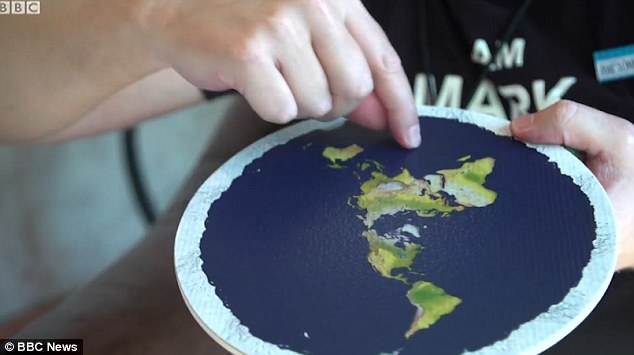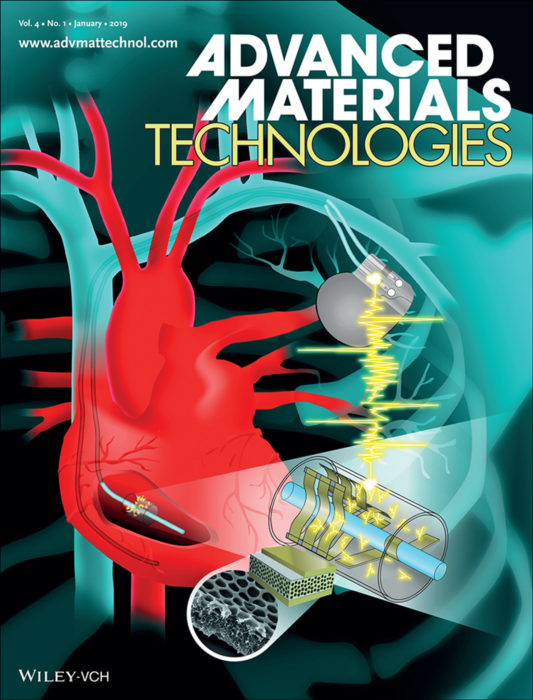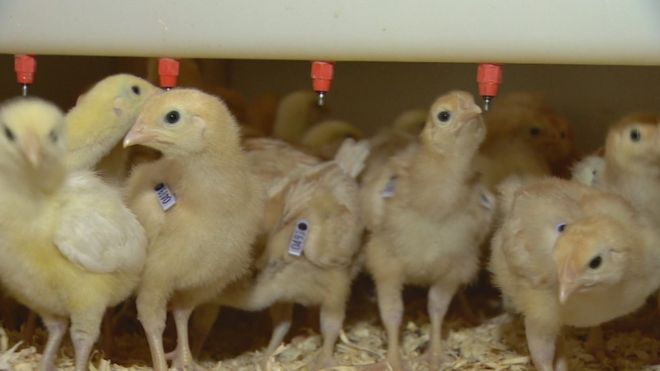Feb
05
2019
 I am still stunned that there are seemingly average people walking around today with the firm belief that the world is actually flat. The numbers, while still small, are also surprisingly high. In a recent survey only 84% of those surveyed were confident that the Earth is “round”. The rest expressed some doubt, were confident the Earth is flat, or were unsure. For those 18-24 only 66% were confident the world is round. (The survey was presented as a dichotomy between round and flat – it’s hard to say if this had any effect on the responses, but we’ll put that aside.) Belief in a flat Earth correlated with being young, religious, and poor.
I am still stunned that there are seemingly average people walking around today with the firm belief that the world is actually flat. The numbers, while still small, are also surprisingly high. In a recent survey only 84% of those surveyed were confident that the Earth is “round”. The rest expressed some doubt, were confident the Earth is flat, or were unsure. For those 18-24 only 66% were confident the world is round. (The survey was presented as a dichotomy between round and flat – it’s hard to say if this had any effect on the responses, but we’ll put that aside.) Belief in a flat Earth correlated with being young, religious, and poor.
Wrapping your head around this fact, for anyone with a modicum of scientific literacy and general sense, is not easy. But I am trying not to settle for any simplistic explanation of this phenomenon. Certainly any fringe movement like this is going to attract those with mental illness or an otherwise tenuous grip on reality. It also attracts dedicated conspiracy theorists. There are also the Sherri Shepherds of the world who simply can’t be bothered to clutter their mind with extraneous facts, such as the shape of the world on which they live.
But there seems to be still more going on, especially with the recent increase in this phenomenon. First, let me put to rest the scientific question – the Earth is undeniably roughly a sphere. I already reviewed some of the common arguments the flat-earthers raise, and they are all demonstrable nonsense. There are many sources online going over the countless hard proofs that the Earth is round. What flat-earthers do, like any conspiracy theorist, is look for anomalies and then declare the Earth is flat. What they don’t do, and cannot do, is explain all the actual observations that anyone can make, let alone those made by scientists and astronauts. They can’t explain lunar eclipses, or the changing orientation of the moon, direct observations of the curvature of the Earth from high commercial jets, or along very long bridges. And of course they can’t explain all of space travel and the countless images and videos from space showing a round Earth.
Continue Reading »
Feb
04
2019
 As our electronic and computer technology advances, the technology of implantable medical devices is opening up. Things like pacemakers are already old established tech, but ambitious researchers are looking at much more than just pacing the heart. There is potential for brain-machine interfaces, spinal cord stimulators, cochlear implants, and even replacement organs. One major technological limitation, however, is how to power these devices.
As our electronic and computer technology advances, the technology of implantable medical devices is opening up. Things like pacemakers are already old established tech, but ambitious researchers are looking at much more than just pacing the heart. There is potential for brain-machine interfaces, spinal cord stimulators, cochlear implants, and even replacement organs. One major technological limitation, however, is how to power these devices.
Right now the state-of-the art is small batteries. A pacemaker, for example, can last 5-10 years on one battery, which then would have to be replaced. Replacing a battery requires another surgery, which is fairly low risk but not negligible. Researchers are working on essentially two options to get around this limitation. The first is recharging batteries from the outside using a coil. You generate an electromagnetic field on the outside which induces a current in an implanted coil which then recharges the battery. This works, but is limited by the fact that tissue tends to block the field, and also the coils are bulky which limits the biological spaces in which they can be placed.
Still, external recharging can work for some applications. For example, a pacemaker can have a battery pack just under the skin that a coil can be placed directly over to recharge.
Perhaps a better option would be if the device could harvest energy continuously from the body itself. The body generates a lot of energy in multiple forms, and if even a small amount of that could be harvested that could keep something like a pacemaker going indefinitely, without any further recharging or surgery. Further, a totally self-charging device could be placed deep within tissue, without the need to have a coil visibly just under the skin.
Continue Reading »
Feb
01
2019
 One of the ways in which medicine advances is developing better, faster, cheaper ways of mass-producing needed pharmaceuticals. Chemists working for pharmaceutical companies are always looking for a better pathway to get to their desired product. Protein-based drugs are particularly difficult and expensive to manufacture – proteins are large molecules of precisely sequenced amino acids that also have to be folded into a particular configuration. The best way to produce proteins is within living cells.
One of the ways in which medicine advances is developing better, faster, cheaper ways of mass-producing needed pharmaceuticals. Chemists working for pharmaceutical companies are always looking for a better pathway to get to their desired product. Protein-based drugs are particularly difficult and expensive to manufacture – proteins are large molecules of precisely sequenced amino acids that also have to be folded into a particular configuration. The best way to produce proteins is within living cells.
Initially protein drugs were simply harvested from plants or animals. Insulin, for example, was originally sourced from cow (bovine) or pig (porcine) pancreas. This was an expensive process, and the resulting insulin was not pure, and also was not human. This resulted in decreased effectiveness, some variation in purity, and the tendency to produce immune reactions.
In 1978 the first recombinant human insulin was produced using E. coli bacteria in which the gene for human insulin was inserted. Recombinant human insulin came on the market in 1982, increasing the availability, safety, and effectiveness of insulin and reducing the cost.
This that time this technique has been used to make a host of medical and non-medical protein products, using bacteria or yeast. Most cheese, for example, is used using rennet derived from genetically modified yeast. Prior to that rennet was harvested from the stomach lining of calves. The modern cheese industry would essentially not exist without GM rennet.
Continue Reading »
 I am still stunned that there are seemingly average people walking around today with the firm belief that the world is actually flat. The numbers, while still small, are also surprisingly high. In a recent survey only 84% of those surveyed were confident that the Earth is “round”. The rest expressed some doubt, were confident the Earth is flat, or were unsure. For those 18-24 only 66% were confident the world is round. (The survey was presented as a dichotomy between round and flat – it’s hard to say if this had any effect on the responses, but we’ll put that aside.) Belief in a flat Earth correlated with being young, religious, and poor.
I am still stunned that there are seemingly average people walking around today with the firm belief that the world is actually flat. The numbers, while still small, are also surprisingly high. In a recent survey only 84% of those surveyed were confident that the Earth is “round”. The rest expressed some doubt, were confident the Earth is flat, or were unsure. For those 18-24 only 66% were confident the world is round. (The survey was presented as a dichotomy between round and flat – it’s hard to say if this had any effect on the responses, but we’ll put that aside.) Belief in a flat Earth correlated with being young, religious, and poor.
 As our electronic and computer technology advances, the technology of implantable medical devices is opening up. Things like pacemakers are already old established tech, but ambitious researchers are looking at much more than just pacing the heart. There is potential for brain-machine interfaces, spinal cord stimulators, cochlear implants, and even replacement organs. One major technological limitation, however, is how to power these devices.
As our electronic and computer technology advances, the technology of implantable medical devices is opening up. Things like pacemakers are already old established tech, but ambitious researchers are looking at much more than just pacing the heart. There is potential for brain-machine interfaces, spinal cord stimulators, cochlear implants, and even replacement organs. One major technological limitation, however, is how to power these devices. One of the ways in which medicine advances is developing better, faster, cheaper ways of mass-producing needed pharmaceuticals. Chemists working for pharmaceutical companies are always looking for a better pathway to get to their desired product. Protein-based drugs are particularly difficult and expensive to manufacture – proteins are large molecules of precisely sequenced amino acids that also have to be folded into a particular configuration. The best way to produce proteins is within living cells.
One of the ways in which medicine advances is developing better, faster, cheaper ways of mass-producing needed pharmaceuticals. Chemists working for pharmaceutical companies are always looking for a better pathway to get to their desired product. Protein-based drugs are particularly difficult and expensive to manufacture – proteins are large molecules of precisely sequenced amino acids that also have to be folded into a particular configuration. The best way to produce proteins is within living cells.




